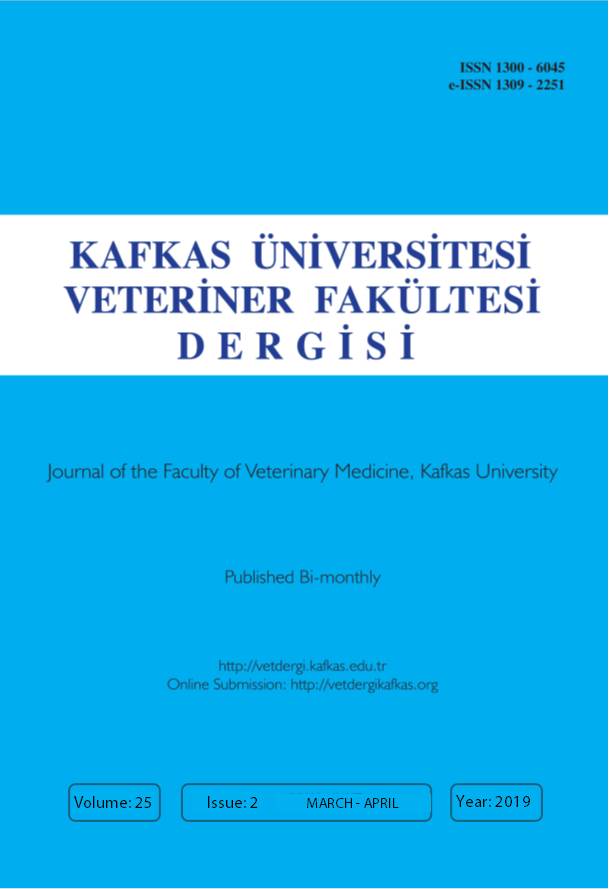
This journal is licensed under a Creative Commons Attribution-NonCommercial 4.0 International License
Kafkas Üniversitesi Veteriner Fakültesi Dergisi
2019 , Vol 25 , Issue 2
Evaluation of Some Biological Effects of Incarvillea emodi (Royle ex Lindl.) Chatterjee and Determination of Its Active Constituents
1Hazara University, Faculty of Sciences, Department of Botany, 21130, Mansehra - PAKISTAN2Hacettepe University, Faculty of Pharmacy, Department of Pharmacognosy, TR-06100 Ankara - TURKEY DOI : 10.9775/kvfd.2018.20557 This present study was an evaluation of the antioxidant and cytotoxic activities of Incarvillea emodi (Bignoniaceae). The aqueous extracts of different parts of Incarvillea emodi, collected from different places in Pakistan, were tested for radical scavenging effects on 2,2-diphenyl-1-picrylhydrazil (DPPH), nitric oxide (NO), superoxide (SO) and [2,2"-azino-bis(3-ethylbenzothiazoline-6-sulphonic acid)] (ABTS•+) radicals. DPPH radical scavenging effects of three polyamide column fractions of one extract were also tested. The cytotoxicity of the extracts were tested against Hep-2 (human larynx epidermoid carcinoma) cancer cell line by MTT [3-(4,5- dimethylthiazol-2- yl)-2,5-diphenyltetrazolium bromide] method. In addition, an HPLC-DAD system was used to show the presence of phenylethanoid glycosides in the most active polyamide column fraction. The free radical scavenging effects of the extracts were found comparable to that of reference antioxidants, 3-t-butyl-4-hydroxyanizole (BHA), quercetin and ascorbic acid (AA). Concentration dependent cytotoxic activity was observed against Hep-2 cancer cell line. Two phenylethanoid glycosides, acteoside and leucosceptoside A, were identified in the active polyamide column fraction at HPLC-DAD system. The presence of phenylethanoid glycosides in Incarvillea emodi was shown for the first time with this study. Antioxidant and cytotoxic activity researches are important for developing new drugs. Our results supported to use of Incarvillea emodi as folk medicine due to several biological effects in Pakistan. Moreover, the use of Incarvillea genus as a traditional ethnoveterinary medicine in dyspepsia and internal diseases were reported in previous studies. Keywords : Incarvillea emodi, Bignoniaceae, Radical scavenging effect, Cytotoxic activity, HPLC, Phenylethanoid glycosides










